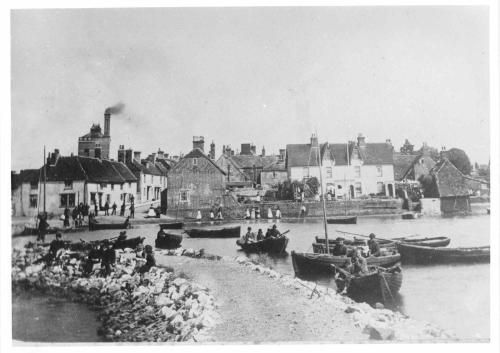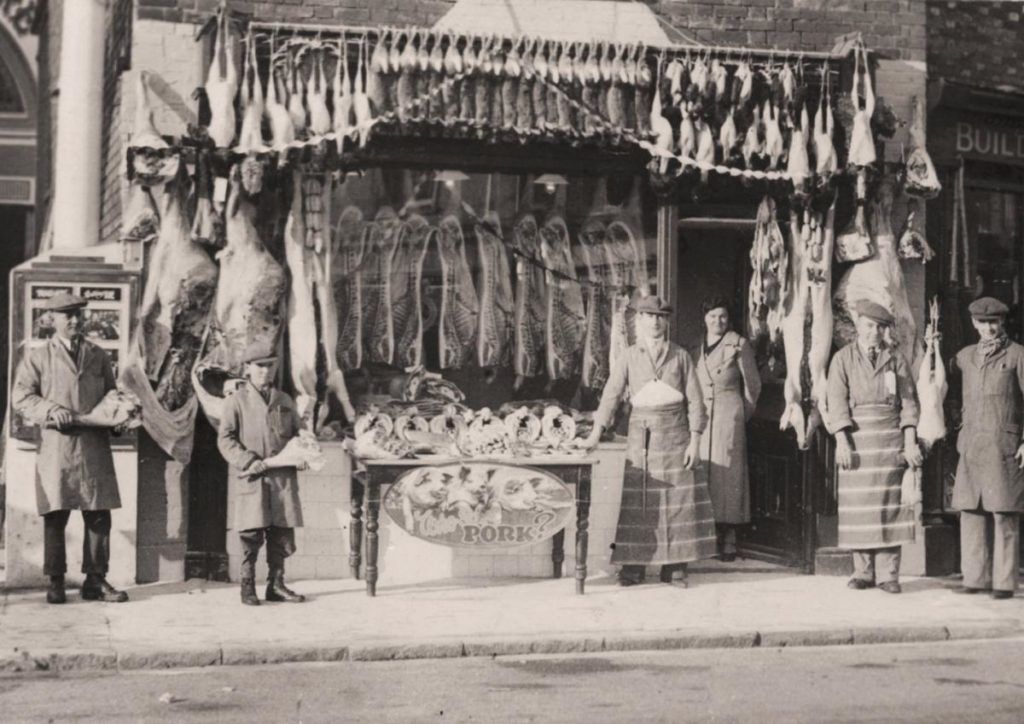Emsworth History
From 500ad to Today
Weobold the saxon is reputed to have sailed into chichester harbour in about 500ad and established a settlement at Warblington
By the end of the 10th century the area was owned by the Earls of Wessex, the last one of whom became King Harold, the last Saxon King of England.
The town of Emsworth did not come into existence until the early 13th century when King John divided the manor of Warblington into two and created a separate town. He gave Emsworth to William Aguillon for the yearly rent of one pair of gilt spurs. In 1239 his son, Henry III, awarded Emsworth the right to hold a weekly market and an annual fair on 7th July.
During the Middle Ages and into the Tudor times, Emsworth was a very small and quite poor community, although there was ship building on the West Brook stream until it was dammed to make the mill pond.
The rise of the British Empire and with it the need for a strong navy meant that Emsworth began to come into its own. The navy needed provisions, and the best way of getting provisions to the dockyard in Portsmouth was by sea. Emsworth was ideally placed, so mills were constructed on either side of the town. The original Town Mill or Lord’s Mill, in Queen Street had been in existence from at least 1570, but the Quay Mill at the bottom of South Street and the Slipper Mill on the east were constructed during the middle of the 18th century. Both mill ponds were constructed by damming the beds of the River Ems and the West Brook.

In about 1760, Thomas Hendy built a quay at the bottom of Sweare Lane (later King Street) in order expand the coastal trade of Emsworth, and the town became an important port trading in corn and flour for the Royal Navy, as well as coals from Newcastle and sending sand and gravel from the harbour throughout the country.
About the same time John King moved into Emsworth and set up a ship-building business in Sweare Lane. He helped prevent the press-gang snatching skilled Emsworthians for the navy, and he also built a house for his family. It was built on the edge of the shipyard and was known as the house that was built in a day. In fact it was an early example of flat-packed. The footings and chimney-breasts were constructed in brick and stone, while the walls were constructed in the shipyard. The on a long summers day the walls were erected and the house made ready for the family to move into that night. It still stands in King Street today.
At the beginning of the 1800s there was an attempt to make Emsworth a rival to Brighton for the craze of sea-bathing. A building was constructed on the coast that could provide hot and cold seawater bathing facilities and it was hoped that a member of the Royal Family would patronise it. Caroline Princess of Wales did visit, but she unfortunately did not have the fashionable persona required, especially as Brighton had attracted her husband, The Prince Regent. After many varying fortunes, the building is now the home of the Emsworth Sailing Club.

Fishing has always been an important element in the life of Emsworth, and many a family has combined fishing with growing crops or running a shop. Originally fishing was confined to the waters inside the harbour, but gradually fishermen began to move outside the harbour, and required bigger boats to do so. Also they were dredging for oysters, which were really a subsistence food, but their popularity grew until Emsworth was depending on the sale of oysters for their wealth.
J.D. Foster and Jack Kennett were two Emsworth businessmen who really saw the advantages of dealing in oysters and also being prepared to invest in the trade to improve the quality of the oysters and the means to dredge them. They built Emsworth into one of the foremost oyster trading ports in England and J.D. Foster built a whole fleet of oyster dredgers that were considered some of the finest inshore fishing vessels ever designed.

The whole industry tumbled into dust in 1902 when the oysters in Emsworth harbour, and many other harbours around the country, became infected with typhoid from untreated sewage draining into the sea. After a lengthy court case led by J.D. Foster, the principle was established that local authorities were responsible for keeping the inshore waters and harbours clean, and that sewage could not be allowed to flow untreated into the sea. Many local authorities complied, but Warblington U.D.C. said they could not afford to do this, and so Emsworth Harbour was closed to oyster fishing and the finest industry in the country died.
Luckily the people of Emsworth have always been resilient; they set to and rebuilt their lives and Emsworth. It was those resourceful people who helped make Emsworth the beautiful place we all know and love today. We hope we can emulate their example and keep Emsworth thriving.

